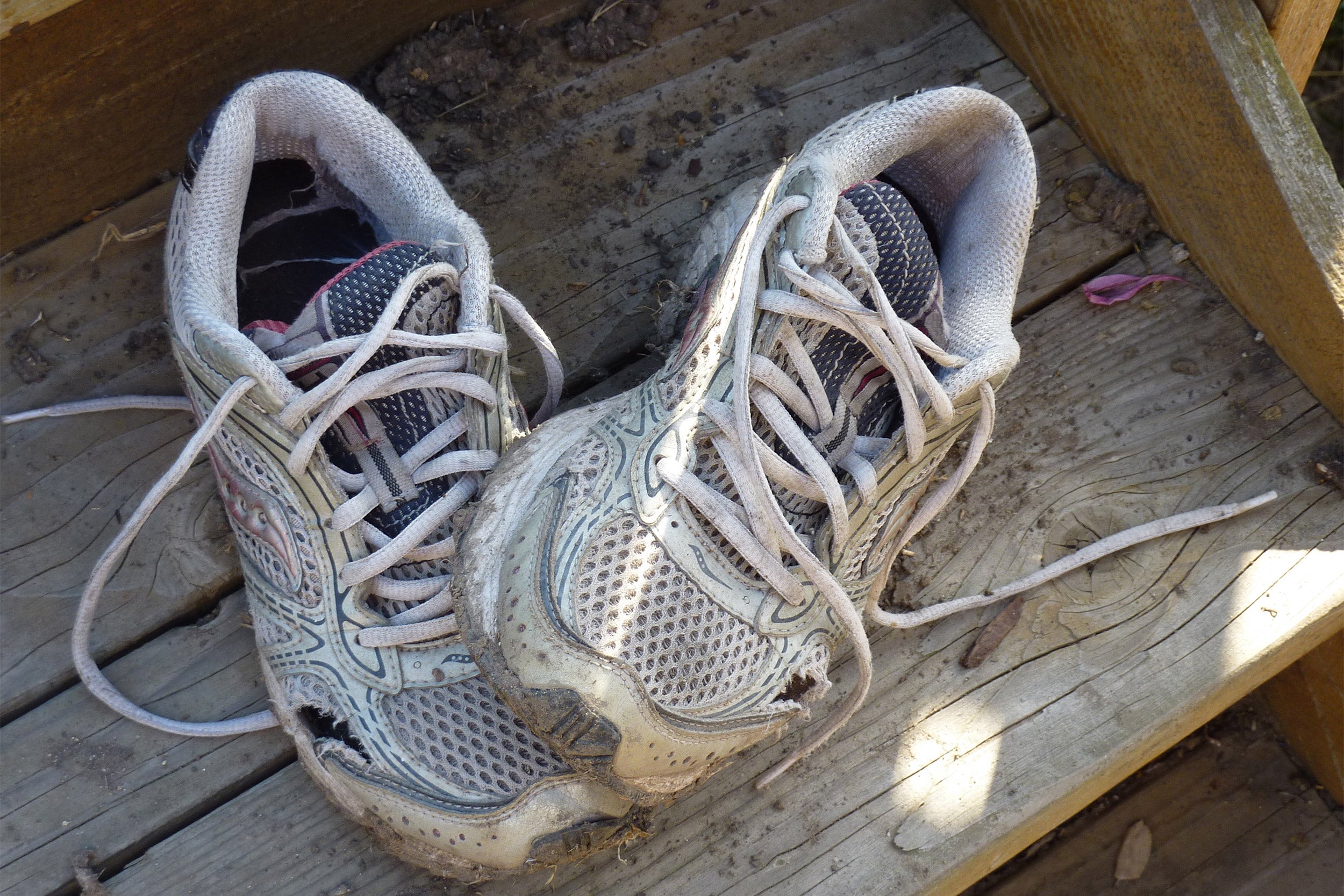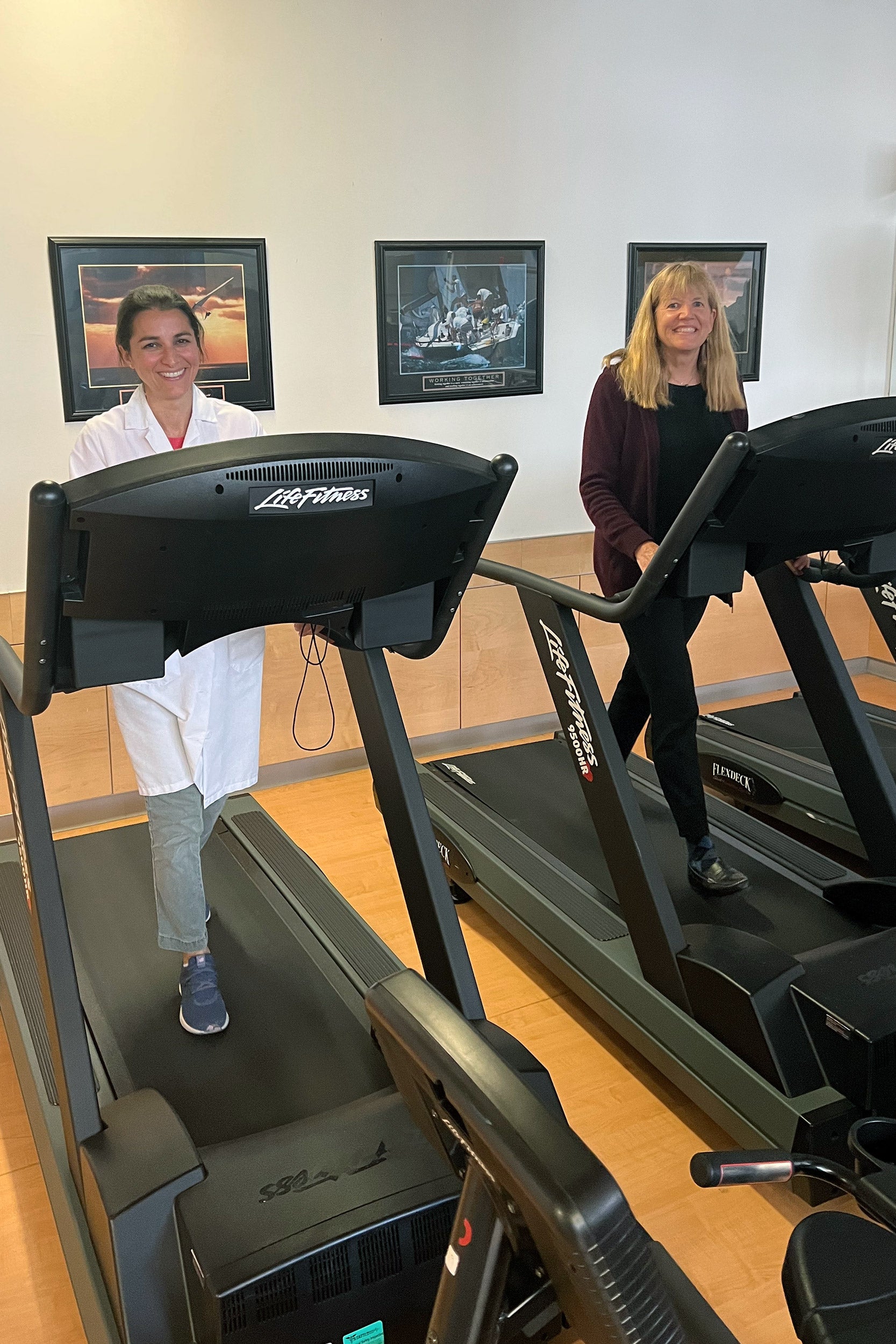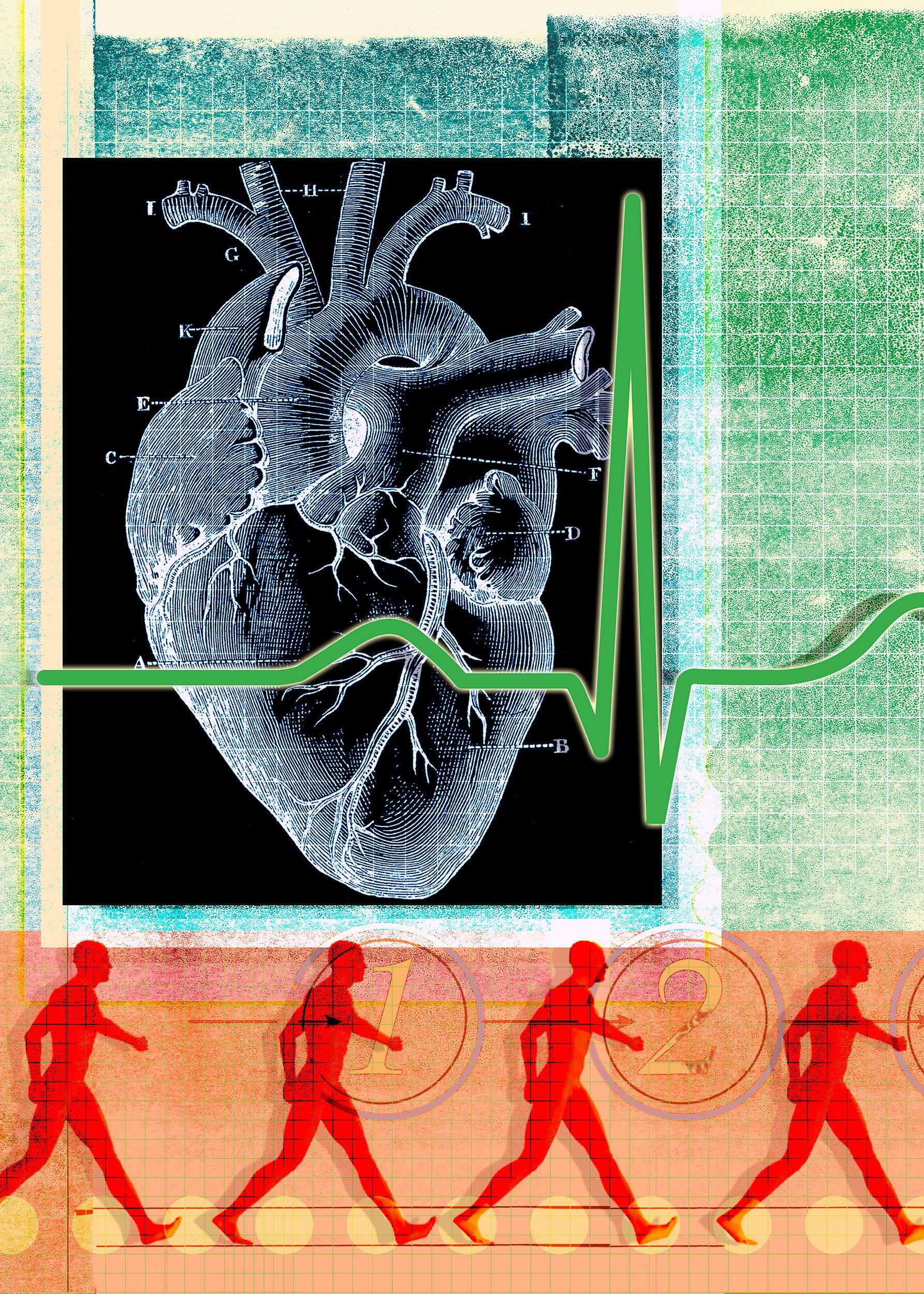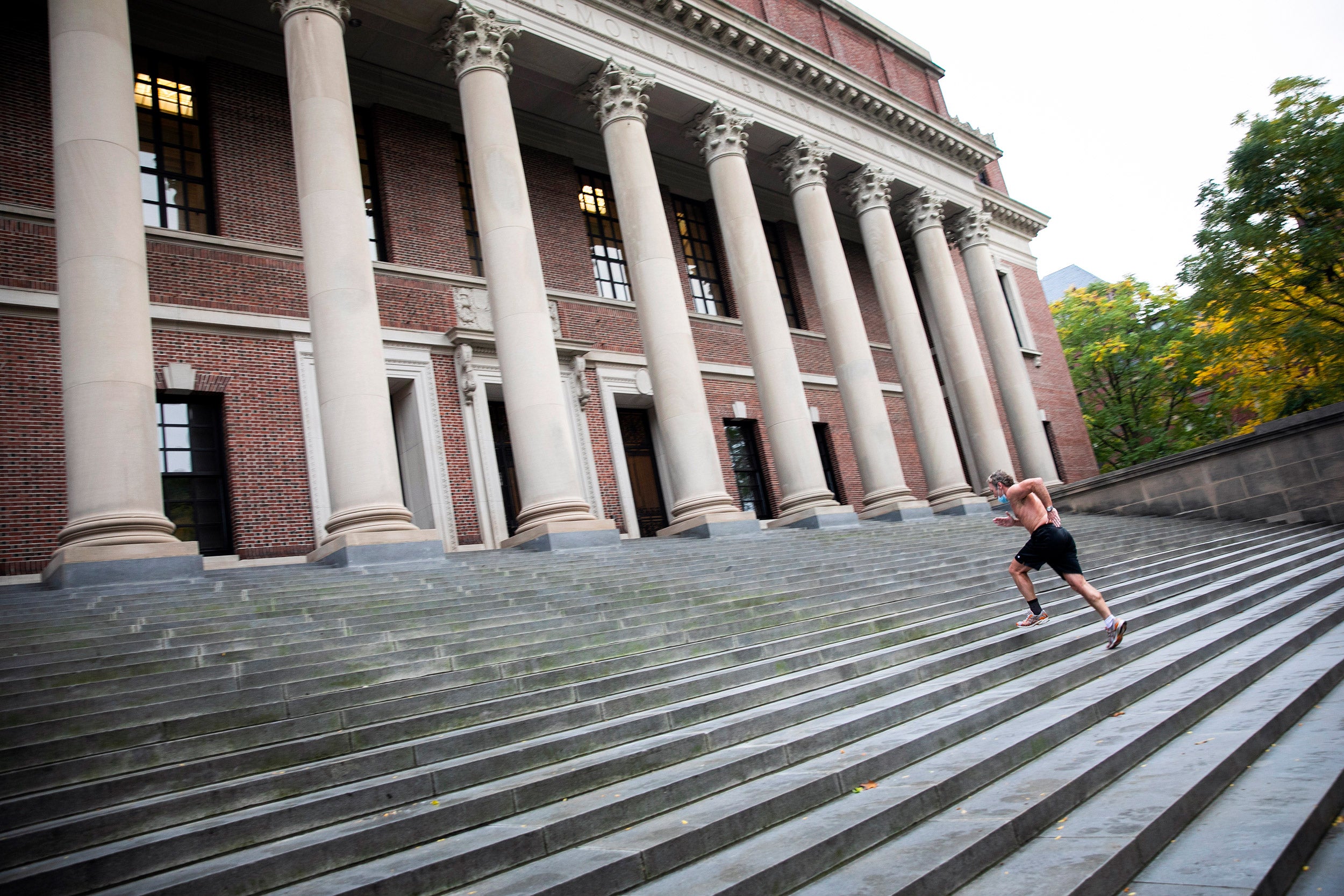
Using mouse models new research suggests grandchildren see benefits such as lower body fat, better insulin control, and healthier bones for some.
iStock by Getty Images
Grandma’s workouts may have made you healthier
Joslin study finds exercise during pregnancy may yield metabolic benefits in grandchildren
If grandma liked working out, her pain may be your gain. It may seem unlikely, but recent research out of the Joslin Diabetes Center says it just might be the case. Laurie Goodyear, a professor of medicine at Harvard Medical School and section head for integrative physiology and metabolism at Joslin, has found that a grandmother’s exercise during pregnancy may make her grandchildren healthier metabolically, with less body fat, better insulin control and, in some, healthier bones. Goodyear and postdoctoral fellow Ana Alves-Wagner, who worked on the project in Goodyear’s lab, discussed the research — published recently in the journal Molecular Metabolism — with the Gazette.
Q&A
Laurie Goodyear and Ana Alves-Wagner
GAZETTE: Your latest research has implications for understanding the potential of exercise to affect metabolism — even generations on. Can you briefly describe what you found?
GOODYEAR: We’ve been doing studies in mice to understand whether grandmaternal exercise can affect the health of grandoffspring. In this study, we took female mice and put them in wheel cages, where they could voluntarily exercise as much as they wanted for two weeks. Then we bred them and let them exercise voluntarily during their gestation.
Their male offspring, which is termed the F1 generation, were bred to females whose mothers had not exercised, and we studied their offspring, whose exposure to exercise was only through their grandmothers. Their mothers and fathers didn’t exercise; their grandfathers didn’t exercise. And the grandchildren themselves, which we call the F2 generation, the second generation, had no exposure to exercise.
Ana studied these animals over a year. The typical lifespan of a mouse is about two years, so she studied them into middle age. What she found was, as the animals got older, their glucose tolerance was much better if the grandmothers had exercised compared to mice whose grandmothers did not exercise. To measure glucose tolerance — which is also measured in humans — the animals are given a sugar bolus, and we measure glucose in the blood. People with diabetes have high levels of glucose during this test compared to healthy people. We found that the blood sugar levels were much better in the grandoffspring of grandmothers who had exercised.
GAZETTE: Were there any other effects in the grandkids as well?
GOODYEAR: There were. They had lower fat mass as they got older. We also found a difference between the males and the females. Both had lower fat mass, but the males also had higher bone mineral density, healthier bones essentially. What we also found — which was very striking in the males — was that they had much lower insulin concentrations if their grandmothers had exercised. That’s a really important aspect of metabolic health, to have lower insulin concentrations.
“In the male mice, this worsening of insulin levels as the animals aged was completely negated if the grandmothers had exercised.”
Laurie Goodyear
GAZETTE: Isn’t insulin important in controlling glucose?
GOODYEAR: It is, but what happens in Type 2 diabetes is that many people become hyperinsulinemic. Their blood sugar levels are high, and in order to compensate, the pancreas keeps putting out more and more insulin. So, a hallmark of Type 2 diabetes, at least in its initial phases, is a high insulin concentration.
GAZETTE: It shows that the pancreas is working overtime?
GOODYEAR: Right, to try to control the blood sugar level. In the male mice, this worsening of insulin levels as the animals aged was completely negated if the grandmothers had exercised. Their pancreases were not working harder. Interestingly, in the females, it was a minor effect because in contrast to males, insulin remains at low levels as all female mice age. However, although insulin did not change in females, as we mentioned, there were major effects of grandmothers exercising on glucose levels in the female grandoffspring.
GAZETTE: What might the mechanism be for these multigenerational effects? Do we know what’s going on?
GOODYEAR: These are the studies that Ana is doing right now to try to understand exactly what’s happening. We can hypothesize that when the grandmother is doing the exercise, the first generation is being exposed in utero — we have a whole line of research studying exactly what’s happening in the first generation. We know that there are adaptations occurring in the grandmother’s placenta that affect the first generation. But also, when you think about it, the gametes (sperm and egg) in the first generation — that will make the second generation — are also being exposed to exercise at that point.

GAZETTE: Ana, what might you find in the eggs of the second generation? What are you looking for?
ALVES-WAGNER: We are looking for epigenetic alterations in the DNA, because epigenetic alterations can be changed as rapidly as two generations. We will analyze micro RNAs, some methylation situations in the F1 generation eggs and sperm to see what’s going on. We are currently investigating how mothers’ exercise affects their children’s gametes.
GAZETTE: In such a short amount of time, is the only possible explanation changes to the genetic regulatory system, these micro RNAs that switch genes on and off, rather than an actual mutation of the underlying gene that produces these effects?
GOODYEAR: We don’t know. One of the things we’ve also thought about is whether the first generation’s behavior changes in a way that affects the second generation — F2 — by virtue of their mothers exercising. That could contribute as well, because we know that there are major effects of the mother exercising on the F1, though most of those effects we don’t see until later in life. At the age where the F1 are breeding to generate the F2, we don’t observe any metabolic effects. They have normal blood glucose levels. So, we think that that the effect is primarily coming from the grandmother.
GAZETTE: Could it be that the first generation is more active even absent an exercise wheel — they move about the cage more, that kind of thing?
GOODYEAR: We’ve looked at that and in the F1 generation, we don’t see any effects on exercise capacity that is tested using a treadmill, or, if we put the mice in the running wheel, we don’t see differences in the amount of voluntary exercise they do. So we don’t think that’s the mechanism.
GAZETTE: How different are mice and humans likely to be in this regard?
GOODYEAR: That is an important question, and we would love to do these types of studies in humans, but they’d take 60 or 70 years. This is a great example of how mouse models can be extremely helpful. What we know — from our studies in the F1 generation and our studies where we looked at adaptations in mouse mothers versus human mothers — is that the mechanism by which mothers have effects on the F1 generation’s metabolic health is a change in the placenta.
There is a specific protein, called SOD3, that increases in the placenta and increases in the maternal blood. We discovered in the mouse that increased SOD3 is having beneficial effects on the F1 in utero that continues into adulthood. When we looked at this in humans, we saw the same thing: SOD3 levels were greater in highly active women, both in their blood and in their placenta. Therefore, we think that the mouse studies are very relevant to what’s happening in humans.
There is also precedent from studies that investigated the outcome of the Dutch famine, where pregnant women had extreme undernutrition — as few as 400 calories a day — that caused detrimental effects on the children and grandchildren, showing that environmental stresses that happen to the grandmother can be passed down through generations.
[gz_pull_quote attribution=”— Laurie Goodyear”]“I’m confident in saying that women who are pregnant should try to be as physically active as they can, depending, of course, on the condition of their pregnancy.”[/gz_pull_quote]
GAZETTE: Can you elaborate a little bit more on that famine? That seems to be a horrible natural experiment on humans.
GOODYEAR: During World War II, there was a blockade of the Netherlands, and people lived on as little as 400 calories. But women still got pregnant, and their children were exposed in utero to this terrible undernutrition. Studies of large cohorts of people found that the grandchildren’s metabolism was negatively affected, as was their overall health.
ALVES-WAGNER: They were more obese, and we know that this predicts development of diabetes. The studies also compared siblings, and if the mother had one child during normal times and one during the famine, the child exposed to the famine had worse health outcomes.
GAZETTE: What are the implications for today’s obesity and diabetes epidemic? As a society, we explain it as “we eat too much and exercise too little” and leave it there. Might there be generational effects that we’re beginning to see?
GOODYEAR: Absolutely. This is why we started working in this area. I remember listening to a seminar, probably 10 years ago, and hearing about how obesity and Type 2 diabetes could have negative multigenerational effects, and that the huge explosion in rates of obesity and Type 2 diabetes may be due in part to parents passing on obesity and diabetes through epigenetic mechanisms. My thoughts were, “This is terrible, but could this be reversed if the moms or the dads exercise?”
There had been research on how exercise during pregnancy can improve the health of the mother and the children at very young ages, but there weren’t studies looking at the effects of mothers exercising during their pregnancy on their children when they are middle-aged, the time when metabolic disease due to obesity starts to occur. So that’s why we got into this: to try to understand whether the exercise could help. We first studied the effects of maternal exercise on the F1 generation and found greatly improved metabolism in these mice. And with Ana’s work, we are seeing these important effects of maternal exercise occurring not only in the first generation, but that maternal exercise also benefits the second generation.
GAZETTE: What comes next?
GOODYEAR: We’re working on a number of different areas to understand more about the mechanism. One of the questions we get all the time is how much exercise does a woman need to do in order to have these beneficial effects on their children? Again, these are difficult studies to do in humans, so we’re using animal models. Our previous studies have focused on blood glucose, insulin, and systemic metabolism, but what are the effects of maternal exercise on the health and function of various tissues in the offspring? We’re looking at adipose tissues, liver, skeletal muscles, and brain. And in the future we want to understand if there are behavioral effects in the offspring. Ana has some interesting data on beneficial nurturing behaviors in the mothers when they exercise during pregnancy, but are there also effects on behavior and brain health in the offspring?
GAZETTE: Is there a take-home message? Do you feel confident enough to tell people that, if you’re pregnant, start exercising for the sake of your grandkids?
GOODYEAR: I’m confident in saying that women who are pregnant should try to be as physically active as they can, depending, of course, on the condition of their pregnancy. There’s strong human data showing that exercise during pregnancy improves the mother’s health; numerous animal studies showing improved first-generation health; and now we have evidence that maternal exercise will positively impact the health of the second generation. I’m not an obstetrician, and there are certainly conditions where a woman cannot perform exercise during pregnancy, but, when medically approved, being physically active is important — for the mother, the first generation, and now even the grandchildren.







